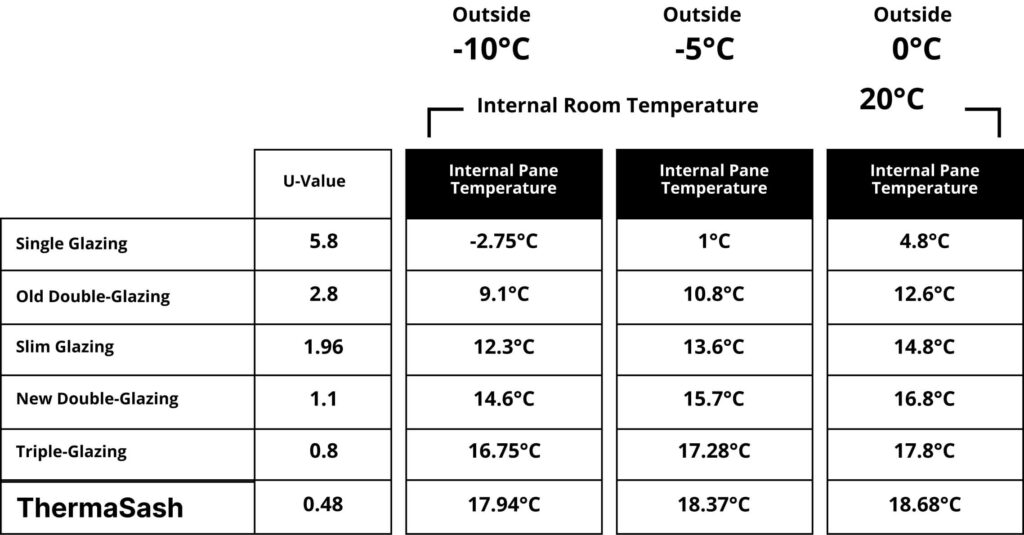ThermaSash vacuum insulated glazing
Our VIG window replacement glass is insulated with a vacuum rather than air or gases, which makes it five times more energy efficient compared to old double-glazing units that are installed in millions of UK homes.

What is VIG – Vacuum insulated glazing
Vacuum-insulated glazing (VIG) is a type of double-glazing window that provides very high thermal insulation compared to conventional double-glazing. Here are the key differences between VIG and regular double glazing:
- Space between panes: In regular double glazing, the space between the two panes of glass is filled with air or an inert gas like argon. VIG has a vacuum between the panes, eliminating conductive and convective heat transfer.
- Pillar spacers: Regular double glazing uses metal spacer bars between the panes to maintain the gap. VIG uses small pillar spacers, reducing thermal bridging.
- Insulation level: The vacuum provides insulation levels 2-3 times better than argon-filled double glazing. VIG has a U-value of around 0.5 W/m2K compared to 1.8-2.8 for regular double glazing.
- Temperature difference: The inside surface of VIG remains much closer to room temperature compared to regular double glazing, reducing condensation issues.
- Cost: VIG is significantly more expensive due to the vacuum sealing process and precision required. It’s generally used only where high performance is critical.
- Durability: VIG units are sensitive to seal failure so durability may be lower than inert gas double glazing. But VIG is still expected to last 15-30 years.
So in summary, VIG provides superior insulation through the use of a vacuum rather than air/gas fill but is also more expensive and sensitive to manufacture. It’s best suited to projects where high insulation and energy efficiency are a priority.
